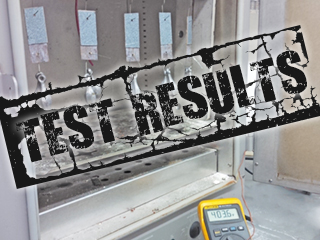
Get this. After a closely monitored, SAF (sheer adhesion failure) test, one of our newest crosslinking contact formulas came back at a whopping 400°F (205°C) temperature resistance! Nope, this glue isn't going to fail, even in the equatorial sunshine!
Sounds hot. It is, but here's what's really cool.
Cross-linking simply means that the adhesive changes chemical state when completely cured. Think epoxy. When you apply epoxy, it's soft and relatively sticky. Overnight it goes hard and impenetrable. Well, that's exactly what a cross-linking contact does!
Not only that…cross-linking contact adhesives also have some initial tack (several different levels are available, depending on type and application), just like standard contact adhesives. That means they've got a bit of grab to hold your substrate fast at the time of application. Unlike standard contact adhesive though, cross-linking contacts change form when cured to develop a highly resistant thermoset bond. Yeah, permanent describes it.
Another cool feature is that the glue itself is resistant to plasticizer migration. So it works great on vinyls, rubbers and most plastics.
The TensorGrip range of cross-linking contacts are an ideal replacement for traditional contact adhesives where a near-structural bond is required. And the range is improving! As we test products in different applications, we're refining and adding to the range.
Global leader in canister adhesive systems. Passionately creating success with simplified innovative technology.
![]()